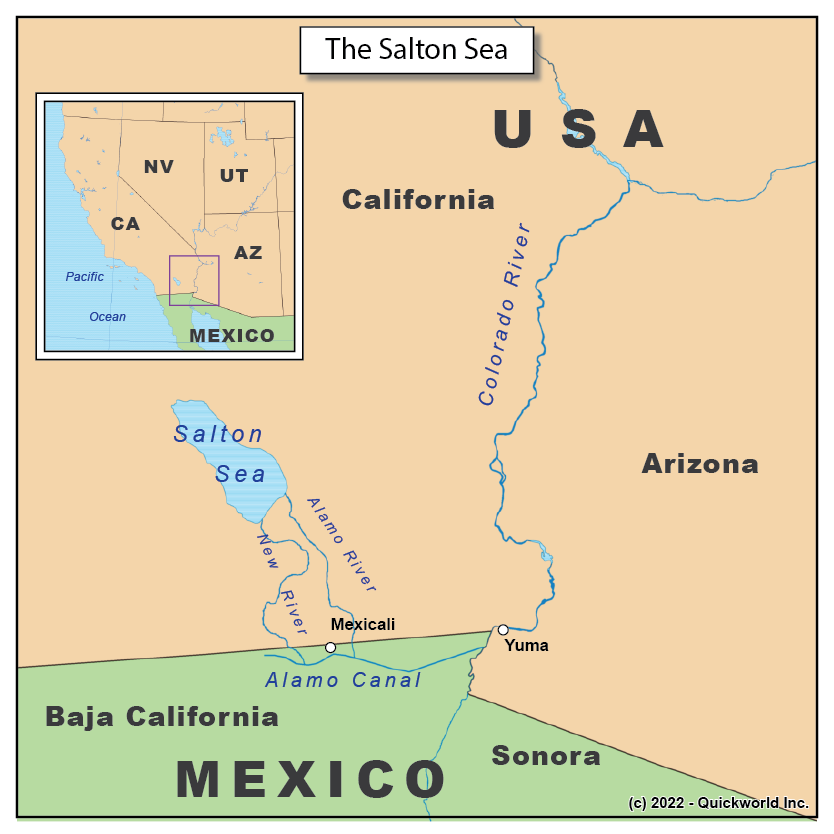Our series on Artificial Features focuses on the Salton Sea, an artificial lake located in southeastern California, near the Mexican border.
Unlike the great majority of artificial lakes, the Salton Sea is not a reservoir resulting from the building of a dam on a river. Instead, it was caused by the partially accidental diversion of the Colorado River toward a lower plain that contained a dried endorheic lake.
The works were started around 1900 with the creation of canals meant to irrigate the Imperial Valley from the waters of the Colorado River, which ran a few dozen kilometers to the East. While successful in the beginning, the diversion took a strange turn when a flood broke several dams and led the entire Colorado River to flow into the Valley, creating a new lake called the Salton Sea. After two years, engineers were able to rebuild the dams and the Colorado took its previous course to the Gulf of California. The Salton Sea has been maintained at a constant level and is now the main source of irrigation for the Imperial Valley, California's second largest agricultural area after the Central Valley.
The Salton Sea


